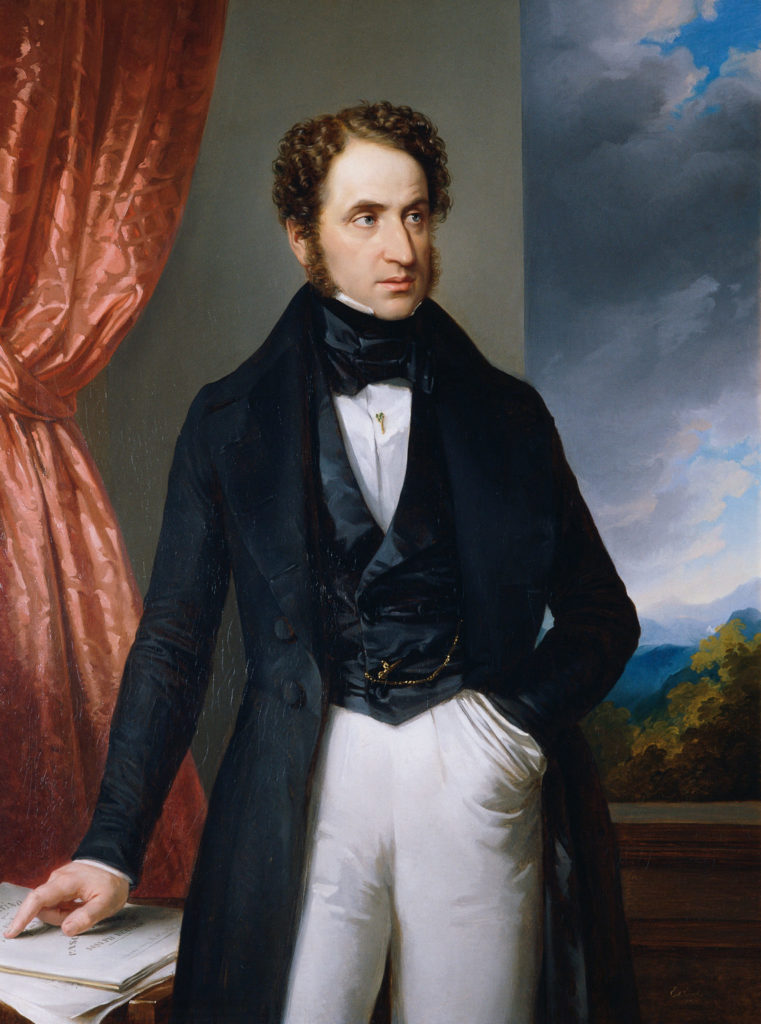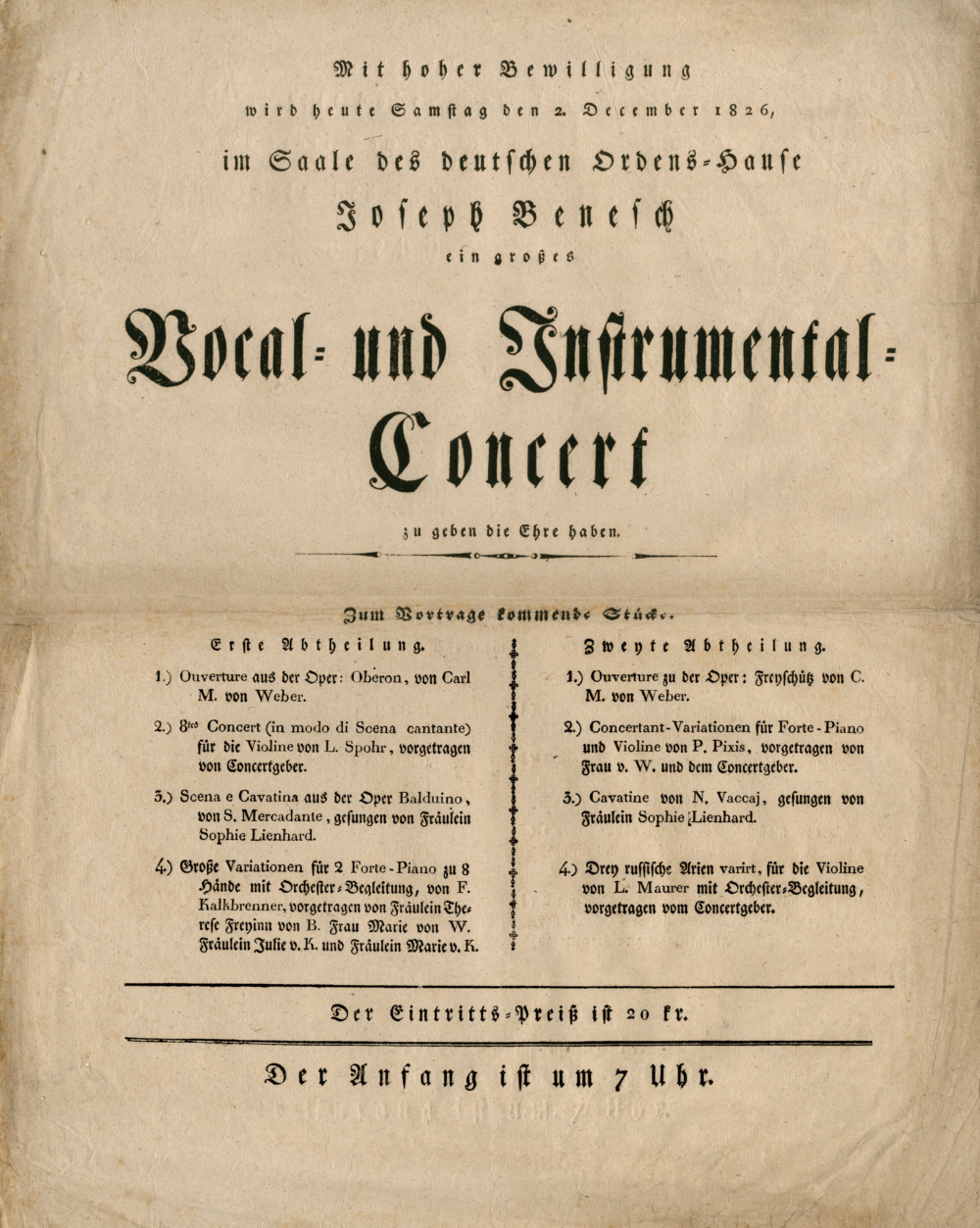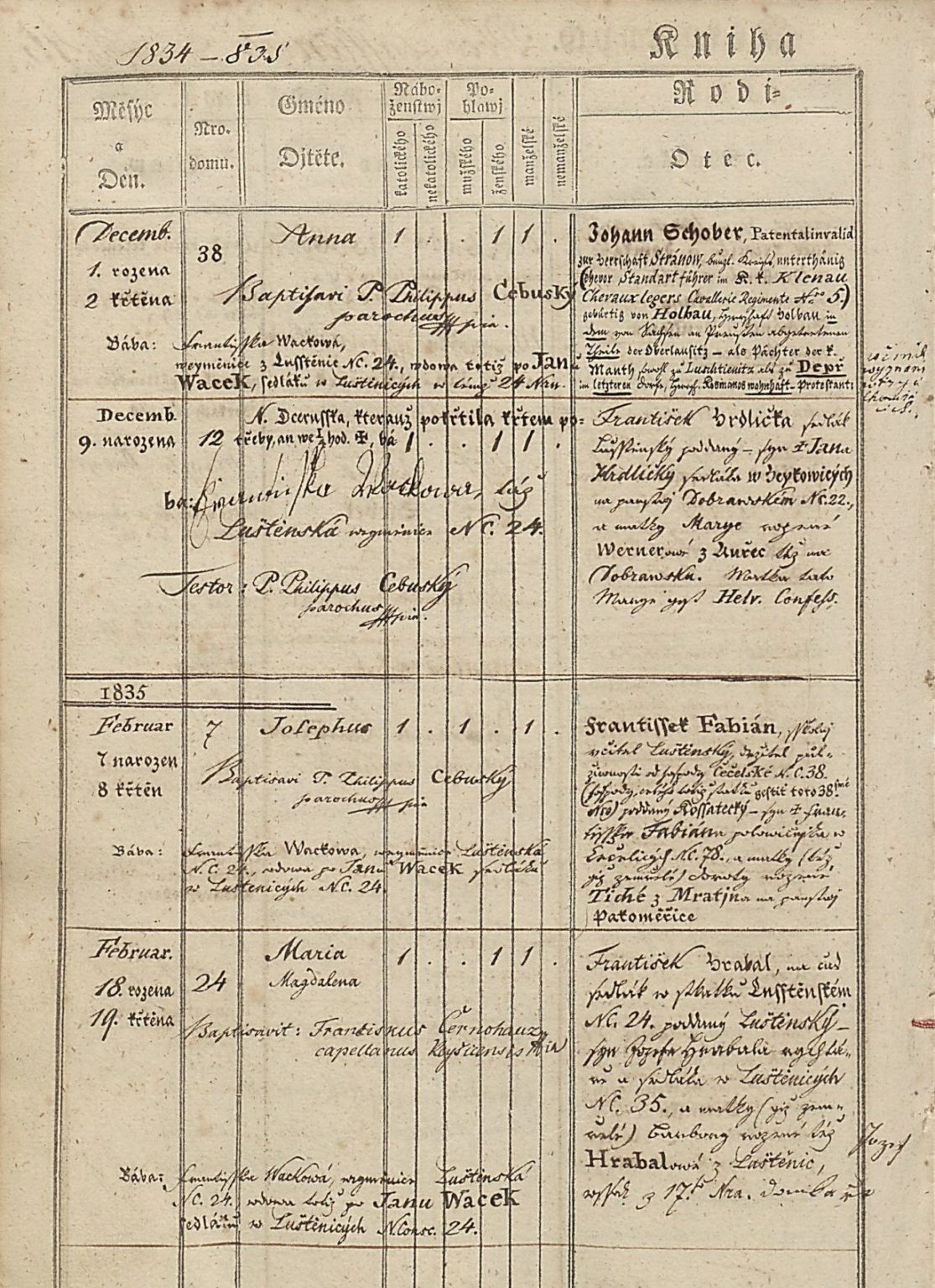ABOUT THE DATABASE
The MUSDAT database contains data on immigrant musicians active in the Slovene lands during the long 19th century with the corresponding music performances, compositions and sources.
During the project, the team collected relevant data on immigrant musicians in the Slovenian Lands between 1794 and 1919, and divided them into three main interrelated categories: 1. Musicians, 2. Music performances, 3. Compositions. Each category was cross-referenced to sources that have been included in the database as individual entries with detailed source and location information (metadata) and hyperlinks. As a special type of source, music scores were recorded as a separate object, including text incipits.
The database is intended to be useful for statistical, personal, and artistic network and spatial analysis, and to serve as a kind of biographical and related reference. The long-term goal of MUSDAT is to systematically include all significant materials on musicians from Slovenia and other historical records, and to make the content available for both academic use and music lovers. The data is in progress and will be regularly expanded and new entries created.

Musicians
The database contains more than 800 musicians, focusing on the immigrant ones who were active in the Slovenian lands between 1794 and 1919. Data on musicians, text authors, copyists, dedicatees, and former owners of scores have been gathered from numerous sources: concert programs, scores, correspondence, registers, graduation lists, censuses, travel reports, annual reports, lists of honorary members, obituaries, etc. In addition to valuable biographical references, we were also able to obtain analyzes and (spatial) visualizations of artistic networks and the musicians’ origins on historical maps (historical regions with georeferencing). The personal data of musicians include information on alternative names, VIAF IDs, capacity, religion and gender, dates of birth, death or marriage, musical education including institution, name of professor and date of graduation, professional career data (residence and employment on Slovenian territory). The names of the musicians are cross-referenced with concert performances, compositions, sources and scores.
music performances
The database contains more than 2250 musical performances performed mainly by immigrant musicians. The data were gathered and transcribed from preserved concert programs or reconstructed from annual reports and newspapers and periodicals (concert announcements, concert reports). The oldest preserved concert programs are from the Philharmonic Society in Ljubljana and date from 1816. The first ones were handwritten, later they were printed mainly in the German Fraktur script. The research and data collection focused on music performances of the (German-speaking) Philharmonic Society in Ljubljana (Philharmonische Gesellschaft), music associations in Maribor (Marburger Philharmonischer Verein), Ptuj (Pettauer Musikverein) and Celje (Cillier Musikverein), the (Slovenian-speaking) Reading Society in Ljubljana (Ljubljanska čitalnica), the Slovenian Music Society (Glasbena matica), and the partial reconstruction of concerts in the National Hall (Narodni dom v Trstu), focusing on immigrant musicians as performers and composers. An initial quantitative analysis of the dataset gave us the opportunity to develop a broader perspective on the topic, especially on artistic networks.


Compositions
The database contains more than 1000 compositions written by immigrant musicians. The compositions written, archived or performed in the Slovenian ethnic territory were included in the database together with the corresponding performances, scores and sources. Data on the compositions were collected from scores (autographs, manuscript copies, nineteenth-century prints), correspondence, music catalogs, concert programs, and newspaper periodicals (concert reports, eulogies).
The most valuable data on the compositions are the corresponding scores (more than 600), which contain information on the type of material, the author of the text, the name of the arranger, the copyist, the dedicatee, the previous owner, the summary of the score, the incipit of the text, origin (date and place) and, last but not least, the place where the score is kept.
In the future, the music incipits will also be added.
SOURCES
The database contains more than 1800 different sources cross-referenced to other categories such as agents, musical performances, and compositions. Sources such as concert programs, registers (birth, marriage, death), censuses, obituaries, correspondence, annual reports, registers of conservatory students, newspaper reports, concert announcements, etc. have been included in the database.
The sources were gathered from various European archives and libraries: Narodna in univerzitetna knjižnica Ljubljana, Slovenski šolski muzej, Arhiv Republike Slovenije, Zgodovinski arhiv Ljubljana, Nadškofijski arhiv Ljubljana, Univerzitetna knjižnica Maribor, Nadškofijski arhiv Maribor, Zgodovinski arhiv Celje, Zgodovinski arhiv Ptuj, Österreichische Nationalbibiothek, Wienbibliothek im Rathaus, Hrvatski glasbeni zavod, Moravský zemský archiv Brno, Archiv hlavního města Prahy, České muzeum hudby, Národní knihovna České republiky, Knihovna Pražské konzervatoře, Bibliothek der Hochschule für Musik und Theater “Felix Mendelssohn Bartholdy”.

The locations of Sources used during the Project
Author
The author of the data model is dr. Maruša Zupančič, the other contributors were Tonja Čakš, dr. Špela Lah, dr. Vesna Venišnik, and Sara Zupančič.
If you have corrections, additions, or suggestions concerning database content, we would be glad to receive them via e-mail.
Contact: marusa.zupancic@zrc-sazu.si


